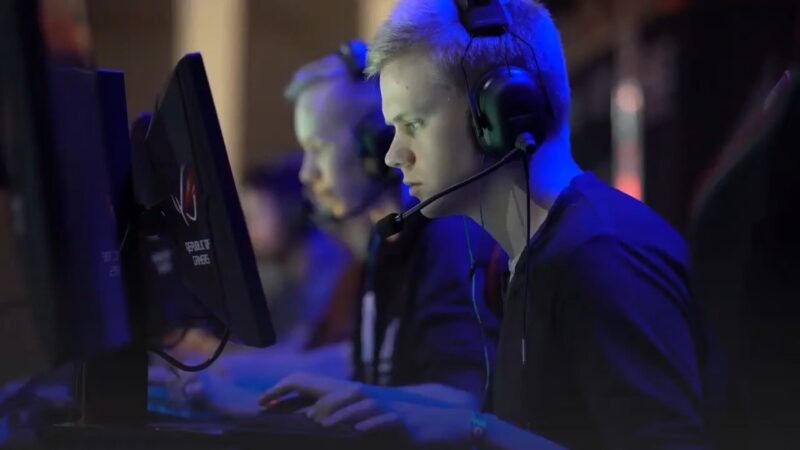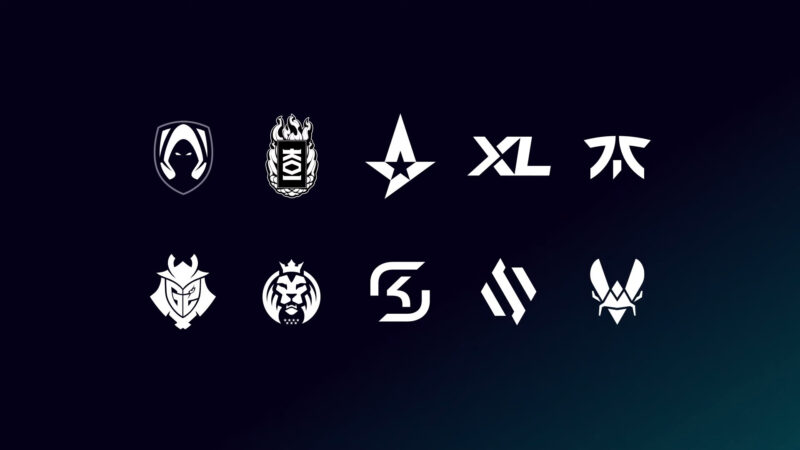The esports industry, a spectacle of modern digital entertainment, has evolved into a lucrative and competitive arena. Central to this ecosystem are the esports teams, which are more than just groups of gamers; they are sophisticated entities operating within a complex financial landscape.
In today’s crazy financial world, top-tier teams are getting even stronger thanks to structured league models, kinda like partnerships in regular sports. It’s a sneak peek into the cool moves that are shaping the future of competitive gaming.
Tournament Prizes
Tournament prize winnings are perhaps the most visible and celebrated means through which teams earn their keep. These events range from regional contests to global championships, featuring prize pools that can reach millions of dollars.
The allure of these tournaments lies not only in the financial rewards but also in the prestige and recognition they bring to winning teams. However, relying on tournament winnings as a primary source of income is fraught with risks.
The highly competitive nature of esports means that only a few top teams consistently secure these prizes. The dynamics of competitive gaming, including changes in game popularity, updates by developers, and shifts in team rosters, further add to the unpredictability of tournament success.
For instance, a team that excels in one season may find itself struggling in the next due to game meta changes or player performance issues. This instability makes tournament winnings a fluctuating and unreliable source of income.
While a significant tournament win can provide a substantial financial boost, it is not a sustainable model for long-term economic stability.
| Tournament | Game | Prize Pool |
|---|---|---|
| Gamers8 2023 – ‘The Land of Heroes’ | Various Titles | $45,000,000 |
| Riyadh Masters 2023 | Dota 2 | $15,120,000 |
| The International 2022 | Dota 2 | $18,930,256 |
| The International 2023 | Dota 2 | $3,380,904 |
| FNCS: Global Championship 2023 | Fortnite | $3,992,000 |
| PUBG Mobile Global Championship 2023 | PLAYERUNKNOWN’S BATTLEGROUNDS Mobile | $3,000,000 |
Sponsorships

Sponsorships are a vital revenue stream for teams, often forming the backbone of their financial model. Brands, recognizing the growing influence of esports among key demographics like millennials and Gen Z, are keen to invest.
These sponsorships can range from displaying brand logos on team jerseys and gear to more comprehensive partnerships involving social media campaigns and branded content creation.
The symbiotic relationship between esports teams and sponsors is built on mutual benefit. Teams gain financial support and resources necessary for training, development, and participation in events.
In return, sponsors access a dedicated, engaged, and tech-savvy audience. In recent years, the nature of these sponsorships has evolved. Initially dominated by gaming-related brands (such as hardware manufacturers and game developers), the sponsorship pool has now expanded to include non-endemic brands from sectors like food and beverage, automotive, and fashion.
This diversification reflects the growing mainstream appeal of esports. For instance, in 2021, the industry saw sponsorships contribute over $641 million to team revenues, a clear indicator of the sector’s robust growth and appeal to advertisers.
These sponsorships have become sophisticated, with brands seeking to integrate their products and services into the esports experience seamlessly. This integration often extends to digital content creation, where teams and players promote products through their social media channels and streaming platforms.
Streaming and Content Creation

Streaming and content creation have emerged as significant revenue sources for esports teams. Popular players and personalities within these teams often have substantial followings on platforms like Twitch, YouTube, and Mixer.
They generate income through a combination of advertising revenue, subscriptions, donations, and sponsored content. The success of a team’s streaming and content creation efforts largely depends on the individual personalities of its players.
Charismatic and skilled gamers can attract large audiences, which in turn enhances the team’s visibility and attractiveness to sponsors. This aspect of revenue generation emphasizes the importance of individual talent and personal branding in the ecosystem.
Streaming and content creation also play a crucial role in fan engagement. By regularly broadcasting gameplay, sharing behind-the-scenes content, and interacting with viewers, players help build a loyal and engaged fan base.
This fan engagement is not just beneficial for generating direct revenue through streaming platforms but also enhances the team’s overall brand value. Moreover, content creation offers teams an avenue to diversify their revenue streams.
For instance, players can create tutorial videos, game reviews, or lifestyle content, which broadens their appeal beyond hardcore esports fans to casual viewers and gamers. This diversification is crucial in building a sustainable financial model, as it reduces reliance on volatile revenue sources like tournament winnings.
Challenges in Streaming and Content Creation
While streaming and content creation offer significant revenue potential, they also pose challenges. The digital landscape is highly competitive, with thousands of streamers vying for attention.
Standing out in this crowded space requires consistent high-quality content, a unique personality, and regular engagement with viewers. Additionally, the demands of streaming and content creation can sometimes conflict with the rigorous training and competition schedules of professional esports players. Teams must strike a balance between allowing players to engage in these activities and ensuring that their competitive performance is not compromised.
Merchandise Sales
Merchandise sales represent a stable and direct source of revenue for esports teams. By selling branded apparel, accessories, and other items, teams capitalize on their brand’s appeal and deepen their connection with fans.
Merchandise sales are particularly lucrative for well-established teams with a significant and loyal fan base. The range of merchandise available has expanded over the years, from traditional items like jerseys and caps to more unique offerings such as limited edition collectibles, gaming peripherals, and lifestyle products. This diversification not only caters to a broader range of fans but also enhances the team’s brand identity.
The Impact of Fan Loyalty on Merchandise Sales
The success of merchandise sales is heavily dependent on the team’s popularity and the loyalty of its fans. Teams with a strong global following can generate substantial revenue from merchandise, which, in turn, can be reinvested into team development, marketing, and other areas.
Engaging marketing campaigns and collaborations with popular brands or artists can also boost merchandise sales. However, the challenge for many teams is building and maintaining a fan base that is engaged and committed enough to purchase merchandise.
This requires consistent performance in tournaments, effective communication and engagement with fans, and a brand that resonates with the esports audience.
The Evolving Ecosystem

As the esports industry continues to grow, teams are increasingly looking toward emerging markets and technologies to diversify and strengthen their revenue streams. Markets in regions such as Southeast Asia, Latin America, and the Middle East are experiencing rapid growth in esports, offering new audiences and sponsorship opportunities.
Teams that can effectively tap into these markets stand to gain significantly in terms of fan base expansion and revenue generation. Emerging technologies also play a crucial role in shaping the future revenue models of esports teams. Innovations in streaming technology, augmented and virtual reality, and blockchain offer new ways to engage audiences and monetize content.
For example, augmented reality could provide immersive fan experiences during live events, while blockchain technology might be used for secure, transparent fan voting systems or for creating unique digital collectibles.
FAQs
What is the richest eSports team?
The richest eSports team in the world is TSM, with an estimated value of $540 million. TSM competes in games such as League of Legends, Valorant, Fortnite, and Apex Legends.
Is Esports a good Career?
Esports can be a good career for people who are passionate about video games and have the skills and dedication to compete at a high level. Esports offers a variety of career opportunities, such as professional player, coach, team manager, content creator, event organizer, or even working in esports marketing and management.
Why don’t Esports teams make money?
Esports teams often struggle to make money because of the high costs of running a team, such as salaries, travel expenses, equipment, and training facilities. Esports teams also face challenges in generating revenue from sources such as sponsorships, media rights, merchandise, and tournament winnings, which can vary depending on the game, the region, and the market conditions.
Do Esports players get paid monthly?
Esports players usually get paid monthly by their teams, as part of their contracts. The amount of salary that esports players receive depends on factors such as their game, their team, their performance, and their popularity. The average salary of a professional esports player is between $500 to $35,000 per month.
Does eSports make a profit?
Esports is a growing and profitable industry, with global revenues reaching $1.38 billion in 2022 and expected to grow to $1.87 billion by 2025. These revenues come from various sources, such as sponsorships, advertising, media rights, merchandise, ticket sales, and game publisher fees. However, not all esports teams and players are profitable, as they have to compete with many others and deal with high expenses.
Conclusion
Esports teams have to deal with many factors that affect their finances, such as the changing trends in the industry. They earn money from different sources, such as winning tournaments, getting sponsors, streaming online, and selling merchandise.
Each of these sources has its benefits and risks. To make a profit, esports teams need to plan well, be flexible, and know the esports market well. As esports becomes more popular, the teams that can handle these challenges will have more chances to succeed.
If you want to discover more about the exciting news in the field of eSports, stay with us at Virtual Sports.
